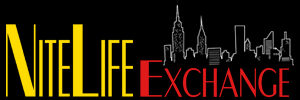
The Landmarks Preservation Commission on December 10 designated five buildings linked to the birthplace of American pop music. Tin Pan Alley was so named to describe the sound of piano music heard from street level. The buildings served as an epicenter for musicians, composers, and sheet music publishers from about 1895 into the 1930s. During this period, some of the most memorable songs of the last century were produced, including “God Bless America” (1918, Irving Berlin), “Take Me Out to the Ball Game” (1908, Jack Norworth and Albert Von Tilzer) and many more that are part of the Great American Songbook.
The effort to landmark the five buildings of Tin Pan Alley began in 2008 when the properties were listed for sale. The buildings, located at 47, 49, 51, 53, and 55 West 28th Street, were listed for $44 million. Preservationists rallied to designate the buildings in order to protect them from possible demolition. The buildings were not sold until 2013.
During a public hearing in May about the designation of the five buildings, a majority of those testifying supported landmark status for the historic properties. But the buildings’ developer Yair Levy argued that the racist songs written during the earliest time period of Tin Pan Alley should prevent the buildings from being landmarked.
In its designation report, the LPC acknowledged that some of the songs were “relatives of musical forms which were popular in minstrel shows.” But Tin Pan Alley also reflects the transition of African American and Jewish artists into the mainstream music industry. The very first work between black and Jewish composers and performers is linked to the area, including Irving Berlin, Harold Arlen, Duke Ellington, George Gershwin, Cole Porter, Noble Sissle, J. Rosamond Johnson, James Reese Europe, and many others.
“Tin Pan Alley represents important African-American musical history, and conveys our true struggles, successes and evolving partnerships with other artists toward creating a broader and more inclusive American songbook,” said writer John T. Reddick, who has written about African-American and Jewish music culture in Harlem.







Leave a Reply